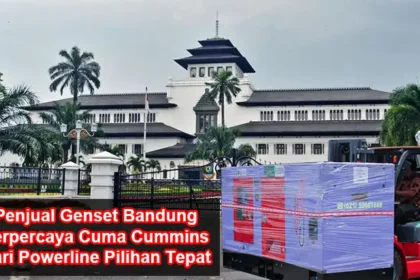Electricity problems can be frustrating, especially when your power goes off unexpectedly. In many parts of KP, residents often face outages caused by two common issues: load shedding and line faults. While both cause power loss, they have very different reasons and solutions. Understanding the difference can save you time and help you take the right steps to fix the problem or prepare for it.
Many people confuse load shedding with line faults because both cause electricity to stop. But knowing which one is causing your blackout helps you decide whether to wait for power restoration or report a problem. It also impacts how your electricity consumption is recorded and billed. This article will explain the differences clearly and guide you on what to do when the lights go out.
What is Load Shedding? Causes and Schedule
Scheduled Power Cuts to Balance Demand
Load shedding happens when the electricity supply is not enough to meet demand. To avoid overloading the system and causing bigger blackouts, the electricity provider, such as PESCO, cuts power in certain areas for a limited time. These power cuts follow a planned schedule, which is often shared in advance with the public.
Why Does Load Shedding Occur?
The main reason for load shedding is that the power generation capacity is less than the total demand. During hot summers or peak hours, many people use air conditioners and fans, increasing the load on the system. When the system can’t supply enough power, load shedding helps reduce stress on the grid.
How to Check Load Shedding Schedules
To prepare for load shedding, you can check local schedules provided by PESCO or regional electricity departments. If you want to monitor your electricity usage or check the latest updates related to power supply in KP, you can easily do a PESCO online bill check. This helps you keep track of your consumption during load shedding periods and avoid surprises in your monthly bill.
What is a Line Fault? Common Causes and Effects
Unexpected Electrical Failures
Unlike load shedding, line faults are unplanned power outages caused by problems in the electrical network. These faults can happen anywhere along the power line, transformers, or local substations. When a fault occurs, it can trip the system to protect equipment and people from damage or danger.
Typical Causes of Line Faults
Common reasons for line faults include damaged wires, tree branches touching cables, lightning strikes, or animal interference. Sometimes, equipment failure in substations or transformers can cause faults as well.
Effects of Line Faults
Line faults often result in sudden power loss without any prior warning. These faults may affect a smaller area compared to load shedding, but restoration time depends on the severity of the problem and repair speed.
How to Identify Load Shedding vs Line Faults
Signs You Are Experiencing Load Shedding
One easy way to tell if your area is experiencing load shedding is by checking if the power outage matches the scheduled times provided by PESCO. Usually, the whole neighborhood or multiple localities lose power simultaneously. The outage is temporary and usually lasts for a few hours.
Signs of a Line Fault
If your power goes off unexpectedly and only affects your house or a few neighbors, it is likely a line fault. You may also notice flickering lights before the blackout. Faults are random and do not follow any schedule. Checking with your local electricity office or complaint hotline can confirm if a line fault is being repaired in your area.
Why This Difference Matters
Knowing the cause helps you decide what to do next. For load shedding, you wait for power to come back according to the schedule. For line faults, reporting the problem can speed up repairs and restore your electricity faster.
When outages happen, it can sometimes affect your billing or cause irregular consumption. To estimate your electricity charges or check for any discrepancies during outages, you can use the PESCO bill calculator, which helps you better understand your bill based on actual usage and any interruptions.
Impact on Consumers | Billing, Appliances, and Reporting
How Outages Affect Your Electricity Bill
Both load shedding and line faults can affect your monthly electricity bill, but in different ways. During load shedding, you might use less electricity, which could reduce your bill. However, sudden outages due to line faults can cause appliances to turn off and on, which may increase power consumption and affect your bill.
What Consumers Should Know About Billing
It’s important to keep track of your electricity usage, especially if you experience frequent outages. Consumers in KP can check their current consumption and dues easily with an online platform. This helps avoid bill surprises and makes it easier to report any errors.
Reporting Issues to PESCO
If you suspect that your bill does not match your usage or you want to report repeated faults or load shedding issues, contact PESCO’s customer service. Timely complaints help improve service quality in your area.
Tips to Report Issues and Minimize Disruptions
How to Report a Line Fault
If you think your outage is due to a line fault, the fastest way is to call PESCO’s helpline or use their online complaint system. Provide your location and details about the outage to help technicians respond quickly.
Preparing for Load Shedding
Since load shedding follows a schedule, plan your important work around it. Keep backup power options like UPS or generators ready if you rely on electricity for work or medical equipment.
Protecting Your Appliances
Power outages and sudden returns can damage electrical devices. Using surge protectors and unplugging sensitive equipment during outages can reduce damage.
Conclusion
Understanding the difference between load shedding and line faults empowers you to respond appropriately when power goes out. Checking local schedules, reporting faults, and monitoring your electricity consumption online can save you time, money, and stress.
By staying informed and using tools that allow checking and calculating the PESCO bill, you can manage your electricity use better and avoid unexpected bills. Always keep communication open with your electricity provider for faster resolutions.




